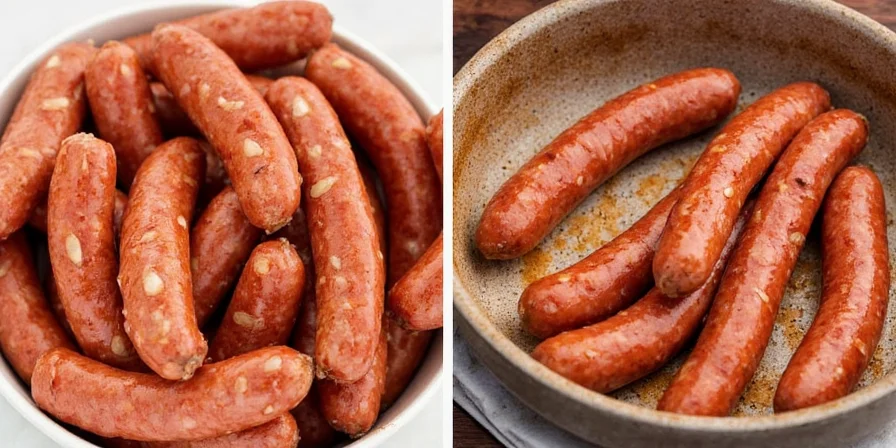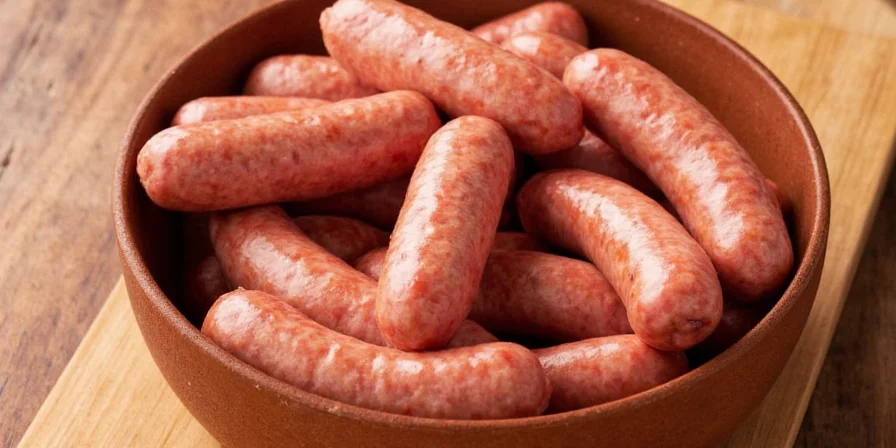Table of Contents
- Introduction
- Why Sausage Seasoning Matters
- Top 10 Sausage Seasoning Tips
- Flavor Profiles & Regional Twists
- Spice Comparison Table
- Pro-Level Techniques
- FAQs
- Conclusion
Welcome to the Wonderful World of Sausage Seasoning
Perfectly seasoned sausage transforms ground meat into culinary artistry. This guide delivers actionable insights for home chefs seeking consistent, restaurant-quality results. Unlike surface-level seasoning, sausage requires flavor integration that survives cooking processes while enhancing texture and preservation.

Grilled sausage — the ultimate test of your seasoning skills.
Why Sausage Seasoning Matters More Than You Think
Sausage seasoning operates at a molecular level: salt dissolves muscle proteins to create emulsified fat networks, while spices penetrate throughout the meat matrix. This differs fundamentally from surface seasoning where flavors remain superficial. Precision matters because improper ratios cause texture failure or flavor imbalance that cannot be corrected post-cooking.
Three Key Roles of Sausage Seasoning:
- Flavor Enhancer: Activates glutamate receptors through umami compounds.
- Preservation Aid: Salt and nitrates inhibit bacterial growth during curing.
- Mouthfeel Magic: Myosin extraction creates cohesive bind preventing crumbly texture.
Top 10 Sausage Seasoning Tips Every Enthusiast Should Know
- Salt is Your Best Friend (But Don’t Overdo It): Maintain 1.8% salt by meat weight. Below 1.5%, protein extraction fails; above 2.5%, flavors become unbalanced.
- Fat is Flavor — Balance Accordingly: For lean meats (under 20% fat), increase paprika and garlic powder by 15% to compensate for reduced flavor-carrying capacity.
- Balance Sweet, Heat, and Smoke: Use 3:1 ratio of sweet to hot paprika when adding cayenne to prevent flavor dominance.
- Toast Whole Spices First: Heat fennel seeds at 350°F for 90 seconds to activate anethole compounds before grinding.
- Distribute Evenly: Sift dry ingredients through a 0.5mm mesh sieve for uniform dispersion.
- Taste Before You Stuff: Pan-fry test patties at exact cooking temperature to assess flavor development.
- Add Liquids Last: Incorporate liquids at 5°F below meat temperature to prevent fat smearing.
- Avoid Over-Mixing: Mix until "tacky" consistency appears (approximately 2 minutes in stand mixer).
- Think Regionally: For authentic Chinese lap cheong, replace fennel with star anise and add Shaoxing wine for fermented complexity.
- Rest It Like Steak: Refrigerate seasoned meat 24 hours for optimal flavor penetration and protein bonding.
Your spice rack could be the secret ingredient to the best sausage you’ve ever made.
Flavor Profiles & Regional Twists
Global sausage traditions reveal distinct biochemical approaches to flavor preservation. Eastern European styles rely on heavy garlic for antimicrobial properties, while Southeast Asian variants use citrus acid for pH control. This biochemical perspective explains why substitutions often fail.
| Region | Signature Spice(s) | Common Ingredients | Flavor Profile |
|---|---|---|---|
| Italy | Fennel, Garlic | Pork, Red Pepper Flakes | Earthy, slightly sweet, mildly spicy |
| Germany | Coriander, Nutmeg, Allspice | Pork, Marjoram | Warm, aromatic, slightly herbal |
| Mexico | Smoked Paprika, Chili Powder | Pork, Cumin, Vinegar | Smoky, tangy, spicy |
| Poland | Garlic, Black Pepper | Pork/Beef Blend, Juniper Berries | Rustic, bold, earthy |
| China (Sichuan) | Star Anise, Sichuan Peppercorns | Pork, Shaoxing Wine, Sugar | Numbing, sweet, complex umami |
Spice Showdown: How Do They Compare?
Spice volatility varies significantly during cooking. High-volatility compounds like allicin (garlic) degrade above 140°F, while capsaicin (chilies) remains stable up to 350°F. This table identifies optimal application points.
| Spice | Heat Level | Flavor Notes | Best For | Stability Temp |
|---|---|---|---|---|
| Fennel Seeds | Low | Anise-like, sweet, earthy | Italian Sausage | 250°F |
| Smoked Paprika | Very Low | Smoky, sweet, rich | Chorizo, Bratwurst | 300°F |
| Cayenne Pepper | High | Fiery, sharp, clean burn | Spicy Links, Andouille | 350°F |
| Nutmeg | Low | Warm, woody, slightly sweet | German Bratwurst | 212°F |
| Sichuan Peppercorns | Medium | Citrusy, numbing, floral | Chinese Lap Cheong | 285°F |

Chorizo — a masterclass in smoked paprika usage.
Pro-Level Sausage Seasoning Hacks
Advanced techniques address biochemical challenges most guides ignore:
- The Ice Cube Test: Freeze seasoned meat mix to simulate cooking temperature effects on flavor volatility.
- Curing Salts = Color & Flavor: Use Prague Powder #1 (6.25% sodium nitrite) at 0.25 tsp per 5lbs meat for consistent pink cure.
- Acid Adds Zing: Add citric acid (0.1%) instead of vinegar for precise pH control without moisture increase.
- Herb Timing: Add dried herbs during mixing; incorporate fresh herbs after emulsification to preserve volatile oils.
- Umami Optimization: Combine monosodium glutamate (0.3%) with tomato paste for synergistic flavor enhancement.
Smoking your sausage? Seasoning needs to survive long, slow heat.
Frequently Asked Questions
How do I fix over-seasoned sausage?
Combine with unseasoned meat at 1:3 ratio. Add 10% pork backfat to dilute intense flavors while maintaining texture.
Can I use fresh spices instead of dried?
Yes, but adjust ratios: fresh garlic requires 3x quantity of dried powder. Note that fresh herbs added during mixing degrade texture - incorporate after emulsification.
Why does my sausage crumble when cooked?
Insufficient salt (<1.5%) prevents protein extraction. Solution: Reprocess meat with 2% salt solution (brine) and mix until tacky. Maintain meat temperature below 36°F during processing.
How long should sausage rest before cooking?
Minimum 12 hours refrigerated. This allows salt diffusion throughout the matrix and myosin solubilization. Extended rest (24-48 hours) significantly improves bind and flavor integration.
What's the science behind sausage seasoning balance?
Flavor balance follows the Maillard reaction curve. Salt triggers protein denaturation, spices contribute volatile compounds that interact with fat matrices, and acids adjust pH to optimize browning. The 3:2:1 sweet/salt/acid ratio creates biochemical harmony.
Conclusion: Precision Over Guesswork
Exceptional sausage seasoning combines biochemical understanding with culinary artistry. By respecting the science of protein extraction, spice volatility, and flavor interaction, you consistently achieve professional results. The Chinese lap cheong variation demonstrates how cross-cultural techniques solve universal challenges - numbing Sichuan peppercorns counteract fatty richness through trigeminal stimulation, a principle applicable to all sausage styles. Master these principles, then innovate with confidence.
Remember: Great sausage starts long before stuffing. It begins with understanding how every ingredient behaves at a molecular level. When you grasp why techniques work, you're equipped to create signature blends that satisfy both tradition and innovation.










 浙公网安备
33010002000092号
浙公网安备
33010002000092号 浙B2-20120091-4
浙B2-20120091-4